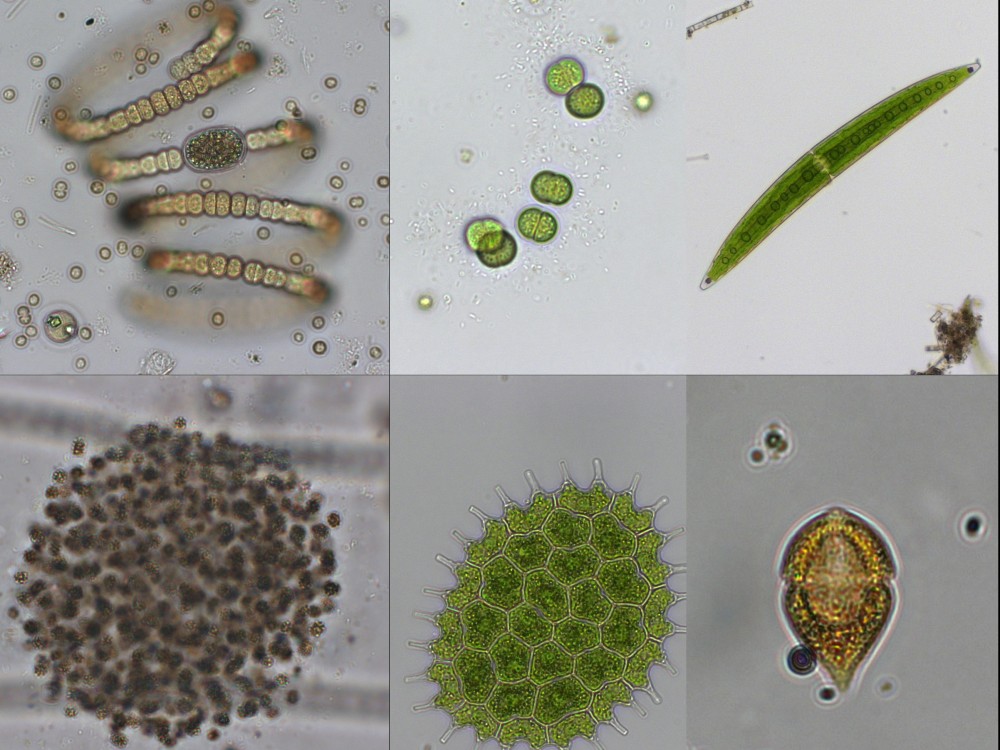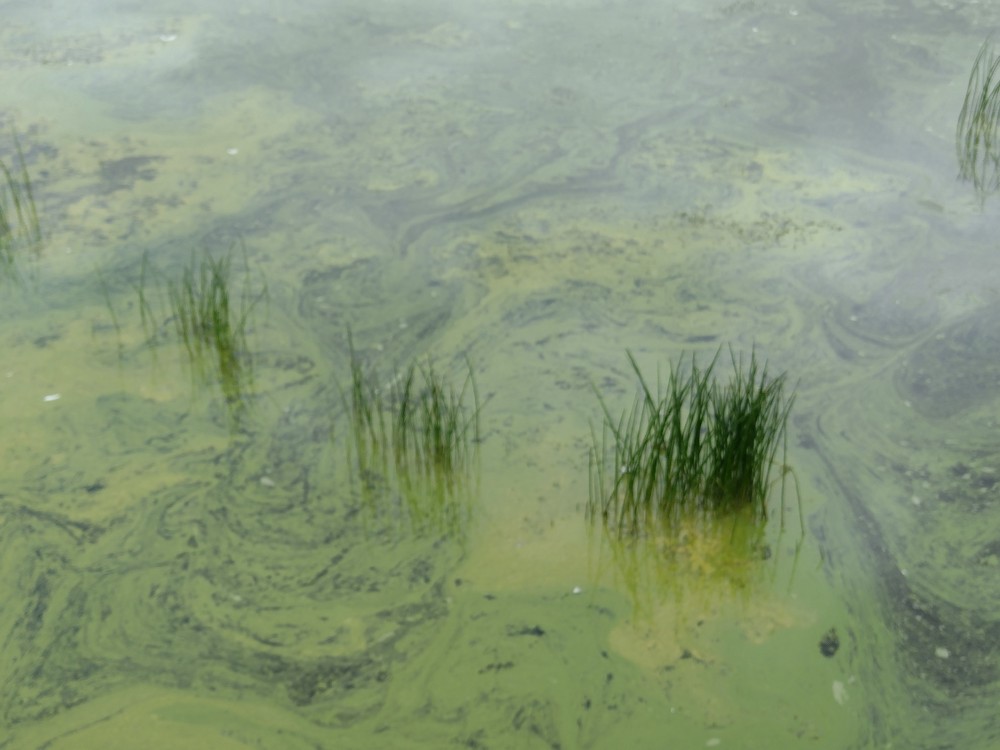Phytoplankton — what are algal blooms?
Phytoplankton are free-floating, single-celled organisms (or groups of single cells) that are found throughout the world's waterbodies. Like higher plants, phytoplankton harness energy from the sun and have a very important role to play at the bottom of the food web. There are many different types of phytoplankton, including green algae, diatoms and cyanobacteria (blue-green algae).
Most phytoplankton species pose no risk to people or wildlife, but some cyanobacteria produce toxins that can cause a range of health problems if touched or swallowed. These include skin rashes, nausea and vomiting, and diarrhoea. When these types of cyanobacteria occur in sufficient numbers to cause a health hazard, they make the water appear blue-green in colour and often appear as foams or scums around the shoreline. When they pose a health risk, signs are erected warning people to stay safe by avoiding contact with the water.
Members of the public (often known as 'Citizen Scientists') can inform others of the presence of a potentially toxic blue-green algal bloom (at Loch Leven, and elsewhere) using the Bloomin' Algae app. This app also provides information on how to recognise blooms of blue-green algae, and how to report them.
Download our information poster on blue-green algae for landowners, land managers or local authorities. This provides advice on how to recognise blue-green algae, potential health risks, how to stay safe, and where to go for more help and advice.
What causes algal blooms?
Algal blooms occur when an excess of plant nutrients (phosphorus and nitrogen) are introduced to lakes and rivers from their catchments, which act as fertiliser for the phytoplankton in the water, causing them to multiply. Over-enriching a waterbody with nutrients is called eutrophication (from the Greek word 'eutrophos' meaning 'well-nourished'). This process is exacerbated when the water is warmer, as cellular activity increases and the phytoplankton are able to multiply even faster.
Algal blooms reduce water clarity and light penetration so much that underwater plants are unable to grow in deep water. When the blooms die and decompose, they often cause de-oxygenation of the water. This can lead to fish kills.
The main sources of nitrogen and phosphorus entering lakes from their catchments are discharges from industry and wastewater treatment works (point sources), and run-off from agricultural land (diffuse sources).
Why are there algal blooms at Loch Leven?
Historically...
During the 1980s and 1990s, Loch Leven experienced extensive algal blooms; these were attributed to high levels of phosphorus pollution, primarily from industrial, sewage and agricultural sources. Aside from being devastating for the loch ecosystem, these blooms had a very negative impact on the local community who lost income from tourism and fishing. Measures were introduced to improve the situation. These included improvements in phosphorus removal at the local waste water treatment works, the adoption of more sustainable agricultural practices, and strict controls on discharges from industrial sources and on-site wastewater treatment systems (such as septic tanks). These changes reduced phosphorus inputs to the loch by about 50 per cent, resulting in a dramatic decline in algal blooms and a noticeable improvement in ecosystem health by the mid-2000s. The most recent survey of nutrient inputs to the loch was undertaken in 2015/16. This estimated the total input of phosphorus to Loch Leven to be about 11.8 tonnes per year, compared to 20 tonnes per year in the mid-1980s.
Recently...
Algal blooms have started returning to Loch Leven in recent years. The most likely explanation for this is climate change.
Annual average water temperatures have risen by more than 1.5°C since the 1970s, and this — combined with the drier weather and calmer conditions — seems to be creating ideal conditions for the large amount of phosphorus that has accumulated in the loch sediments over many decades to be released into the overlying water. This is a natural process that seems to occur more often when the water temperature exceeds 16–17°C. This extra phosphorus allows the phytoplankton to grow at a much faster rate than can be controlled by them being flushed out of the loch through the outflow or being eaten by zooplankton.




